The Honda Hawk GT holds a very special place in my heart. It was the first bike that truly captured my attention and my imagination. It was, for the most part, a sales flop in the United States, but the fact that it has turned into a wildly popular cult bike tells me that the design was ahead of its time. The bike was called the BROS in Japan and Europe because a 400cc version and the 647cc version were developed together as “Brothers”. The Hawk GT was also one of the first modern “Naked” bikes to hit the market and many argue it was the inspiration to the much more successful Ducati Monster.
Despite its miserable marketing as an entry-level motorcycle, the design had a lot of racing heritage. It was developed by Toshiaki Kishi, who has developed everything from the CBR1000 to the VFR1200. The little Hawk was only the second Honda to be fit with the Elf Racing designed “Pro-Arm” Single Sided Swingarm, featured an extruded aluminum twin beam frame that was pilfered from their then-current line of 250cc GP race bikes. All this tech gave the bike the frame designation of “RC-31.” For reference, RC is Honda Racing Corporations traditional frame prefix for race bikes such as the desirable RC-30 right down to Hondas modern MotoGP bikes; the RC211V, the RC212V and RC213V.
The motor was robbed from the Honda XRV650 Africa Twin, which was a lighter, higher-spec version of the 750cc dual-sport motor developed by Honda Racing Corporation to be used for the Paris-Dakar rally. It was missing the heavy, power-robbing shaft drive on the 750cc version. Honda claimed it put out 56hp (most dynos showed it was actually closer to 39hp), conservative even by the standards of the late 80s. For comparison, the CBR600F Hurricane claimed to put out 85hp.
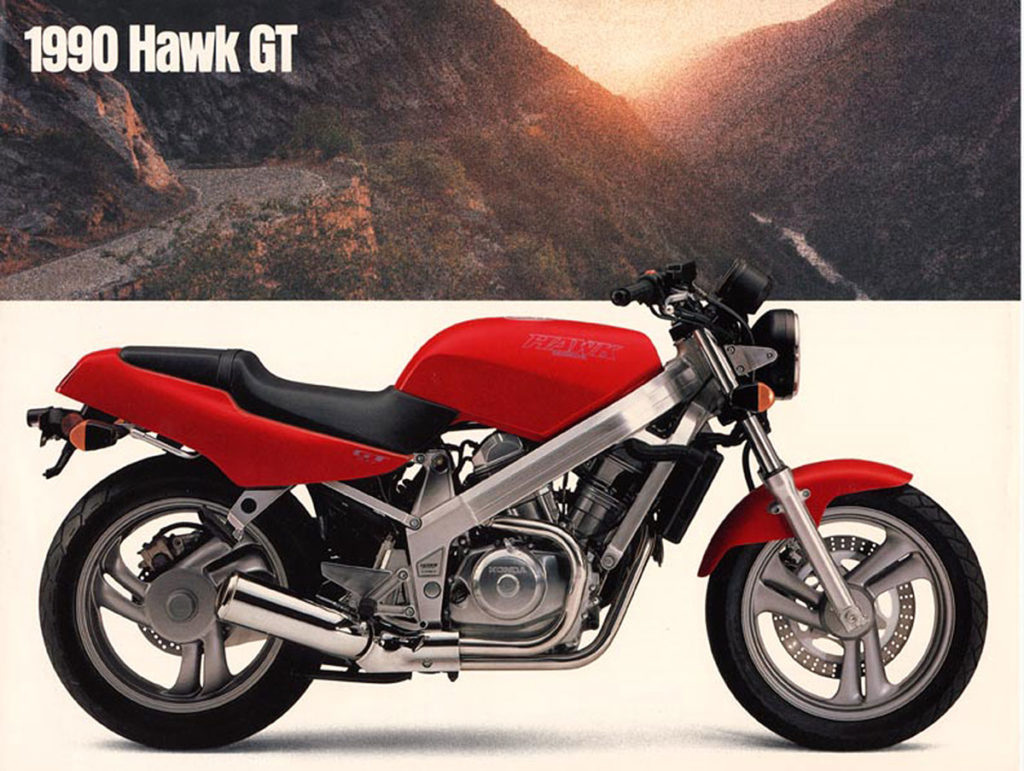
Added to the fact that the little naked bike retailed at $3,600 while the fully-faired and much flashier CBR600F came in only $500 bones more, the venerable little naked bike with racing heritage was doomed to fail. Well, “fail” in the sales sense. The bikes longevity and continued popularity and capabilities compared to modern bikes, almost 30-years later, is proof enough that Honda made a winning motorcycle, probably just a few years too soon.
Sometimes the sum is greater than the whole and that has never been truer than with the Hawk. Less than 40 ponies, no bodywork, a heavy swingarm and slow-revving dirt-bike motor makes the bike, on paper, look like a bit of a dog. But anyone who has ever owned or ridden a little Hawk will tell you the bike was inspired; particularly in the handling department. The bike is so narrow that when you sit on one you’ll swear your knees are touching each other. The centralized weight (low-mounted exhaust system ala modern MotoGP bikes), extremely compliant frame and torquey motor made the Hawk GT friendly enough for new riders and capable enough for even the most experienced racers. Nick Ienatsch, the big cheese behind the Yamaha Champions Race School and author of Sport Riding Techniques has owned and raced Hawk GTs.
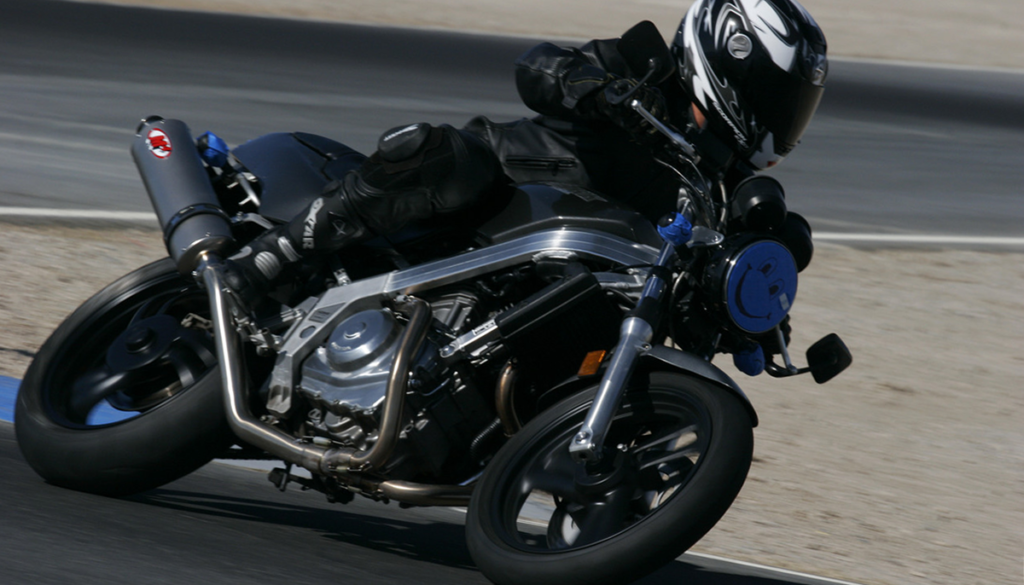
During my own personal Hawk ownership the handling of the bike was what made the bike so endearing. One of my favorite memories of owning the bike took place during regular track days. The bike was so stable I only had to feather the brakes before entering the sweeping down-hill, decreasing radius turn-one at Miller Motorsports Park. I didn’t even have to downshift for the corner. This allowed me to rally around the outside of much faster liter bikes and 600cc middleweights without so much as a flutter from the immutable little Hawk.
The loyal following of the bike is legen-(wait for it)-dary! At a recent international motorcycle show, I had the opportunity to speak with Hondas North American director of Research and Development. We had a fifteen-minute discussion on Hawk GTs where she admitted to currently owning two of the humble little bikes and claimed it was her main inspiration for the new line of 500s, the CB500F, CB500X, and CBR500R. Virtually every motor-journalist has owned one and the Internet following puts the passion of Ducati and Harley Davidson to shame – particularly when you consider the bike was only made between 1988 and 1991. Heck, dozens of Hawk GTs have even come and gone through several CanyonChasers garages and it is, without question, one of our all-time favorite motorcycles. Here’s what we’ve learned about these awesome little bikes.
Care
The bike is delightfully easy to work on and responds well to improvements. I would argue that the late 80’s was Honda’s golden age where their quality and fit and finish was better than any bike has ever been before or since. As a result, with a modicum of care, these bikes will last forever.
That said, if you come across a Hawk today it’s going to need a few things. The most important being that every bit of rubber on the bike is going to need to be replaced. This sounds daunting, but the bike is so simple it’s not so bad.
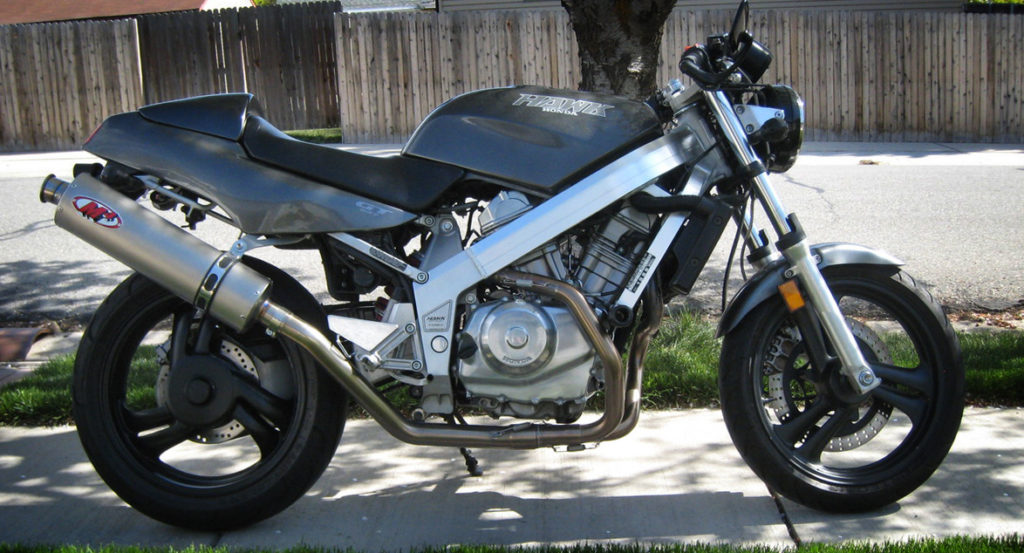
Start by replacing the clutch cable, throttle cables and all the rubber brake lines. Last time we looked, throttle cables were getting a little scarce but most motorcycle shops worth their salt should be able to build cable kits if they can copy the originals. The rubber brake lines are antiquated technology as much as they are old. Replace them with stainless steel brake lines and while you are at it, replace the brake pads. It’s also not a bad idea to replace the speedometer cable while you are at it.
Next, if you want the bike to run its best you will need to replace the float bowl gaskets in the carburetors and the rubber intake manifolds. Again, this sounds daunting (and expensive) but it is neither. If you just replace the float bowl gaskets you’ll be set back $14.00, but a carb rebuild kit (16010-MR1-691) will set you back about $30.00.
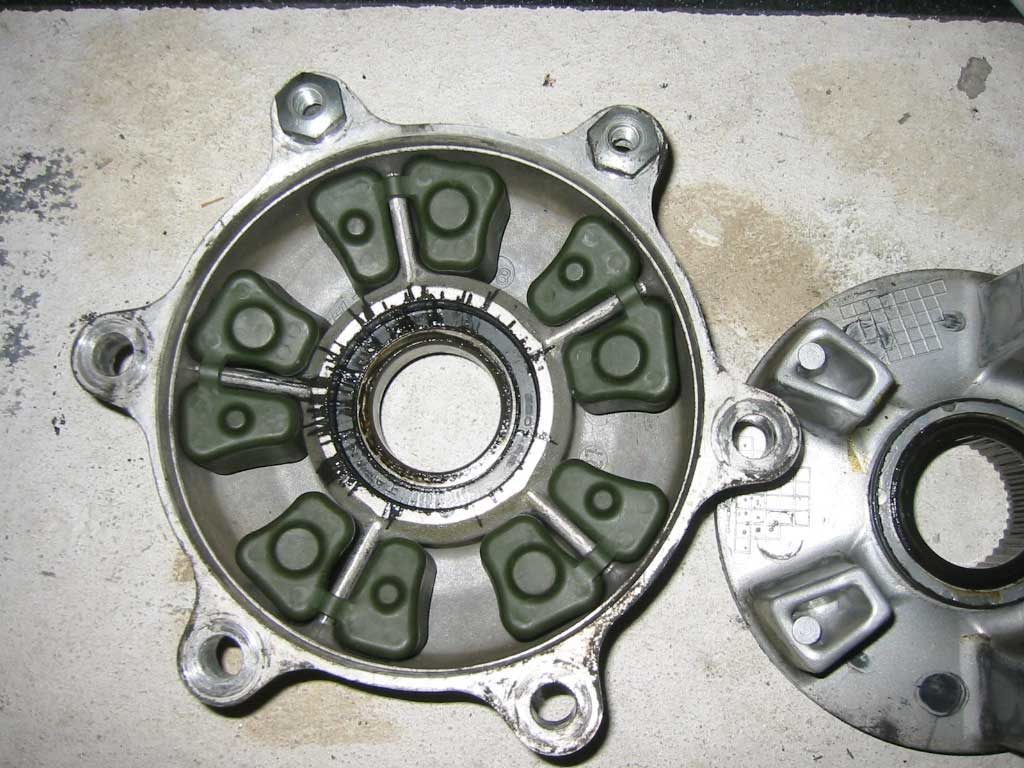
If the intake manifolds are dry and cracking, you will have a leak in the fuel system which will change how the engine runs and in extreme instances actually damage your intake valves. Replacements are cheap (16211-MN8-750) $12.00 each, you’ll need two. If you are ambitious you can also replace the bands that hold everything in place (16218-MN8-750 and 16219-MN8-750).
While you are in there, you may want to replace the fuel filter (16900-MG8-003) for another $4.00. You should also replace your fuel lines, particularly the line that runs from the petcock. And while we are talking about the petcock, It’s very likely it may need some love. It is rebuildable, but a new one can be had for about $50.00 (16950-MN8-003). If you see any brown residue around the petcock, that means it’s leaky and is starving your bike of fuel.
Finally, the most difficult to replace, yet one of the more important components, is the cush drive rubbers. These five rubber dampers (41241-MN8-003) isolate the aluminum wheel from harsh jolts and resulting damage to the aluminum hubs. They are about $6.00 each and you need five of them.
As you would expect the Hawk GT Forum has a pretty extensive list of maintenance and how-to guides to help out. Be sure to check it out ».
Tires
The only challenge you face with tires is the unusual front wheel size. Both hoops are 17-inches, but the front is only a 110 width (as opposed to the more common 120 widths). Don’t give in to the temptation of putting a 120/70-17 front tire, it’s important to stick with the 110/80-17. While a 120/70 or even a 120/60 will fit, we found the incorrectly sized tire was deformed once mounted to the wheel. While it worked good enough during straight-road riding and commuting, the deformed front tire becomes unstable and flighty when ridden in a more athletic manner.
For the rear tire, however, it’s important you deviate from the OEM tire size. The bike came with a 150/70-17, but the 160/60-17 is a much better option and much more common tire size than the 150/70. Plus the profile of the modern 160/60 will give the bike more grip and stability while leaned over. We strongly advise and encourage that you always run matched tires. When you mix and match tires you can end up with all sorts of crazy results with unknown adverse effects on handling. Your tires are the most important safety feature on your bike, don’t scrip and fit good, quality tires.
Not sure what the tire size numbers mean? The first number is the width in millimeters. The second number is a percentage of the first number. So, a 120/70 would be 120mm wide and 70-percent as tall as it is wide, so 84mm tall. Confused yet? A 160/60 would be 160mm wide and 60-percent as tall, so 96mm tall.
Suspension
Suspension is where you will see the most dramatic improvements in how the bike behaves. If you do nothing else to your bike, be sure you change out all the suspension oils and all the seals. However, if you want to make your bike better we strongly recommend some simple upgrades.
Rear
The OEM rear shock on the Hawk was absolute rubbish. A replacement is money very well spent. There are a lot of sources that claim you can retro-fit a CBR900 shock into the Hawk with great results, but this simply is not accurate. Here’s why. The Hawk rear suspension does not use any linkage; meaning the rear shock bolts directly to the frame and directly to the swingarm.
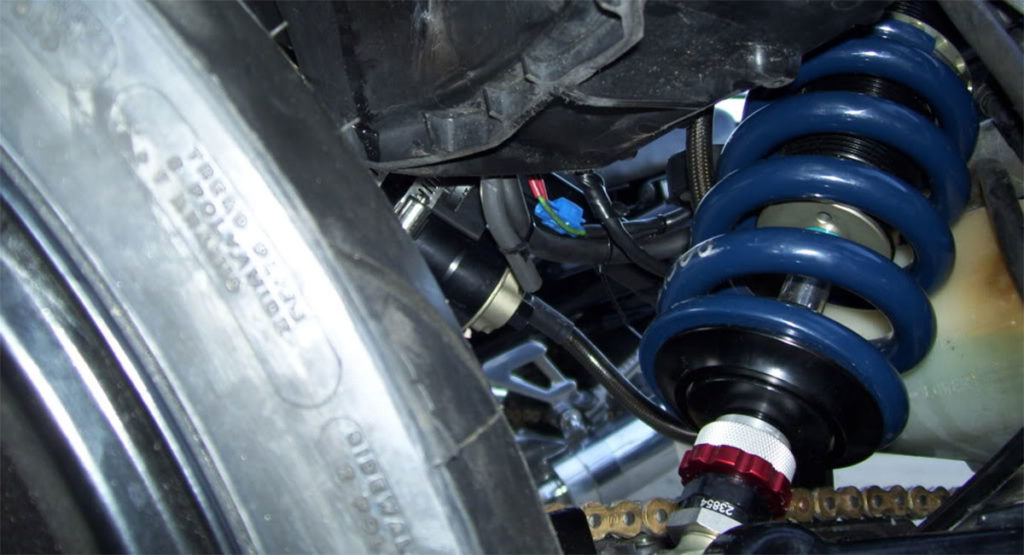
Most motorcycles use a series of hinges and rods to fit the shock. Linkages allow for progressive changes in the forces exerted on the shock throughout the travel of the swingarm. It allows the designers to program the suspension to behave differently for the first 20% of the travel than the last 80% (or whatever the case may be). It’s all very complex and fascinating, but in this application it is important to understand that you cannot put a shock from a bike that uses linkage on a bike that does not. That means that you must buy a rear shock that was designed for the Hawk. The valving and the spring rates will be very different and very specific for each motorcycle.
So back to the popular CBR900 shock swap. You can make one work, but to make it work correctly you will need to replace the shock spring and have the shock body re-valved, by which point you will be within spitting distance of the price of a quality after-market shock. Ohlins shocks haven’t been made for several years, but can be built out of various parts, but at a cost. Fox used to make the shock-to-get for the Hawk, but they stopped making motorcycle suspension components to focus on mountain bikes, however, used and clean examples of Fox Shocks for the Hawk are still kicking around. Penske (US), Hagon (UK) and Wilbers (Germany) still make replacements.
Front
In 1988, the 41mm front forks were top tier. But by todays standard they are antiquated. They are what is known as a “damper-rod” fork. The damping (the rate at which the fork compresses and rebounds) is determined by how quickly the oil passes around and through pre-drilled holes in a long rod that runs the length of the fork. Modern forks are known as a “cartridge fork”. Oil must pass through two separate circuits that have adjusting screws to control how much and how fast oil can flow during the compression and rebound stages of the forks movement. The benefit is you can tune a forks behavior very specifically. How fast or slow the fork compresses when you go over a bump and how quick or slow the fork returns (rebounds) to its original position.
The best bang-for-your-buck upgrade for the forks is to replace the fork springs with the correct rate based on your weight and how you ride. The OEM springs were far too soft and of poor quality. Plus, springs wear out a little bit every time they compress and rebound so it’s safe to assume that springs put into service in 1988 are probably pretty tired by now.
While replacing the fork seals we recommend a product called the Race-Tech Gold Valve. This simple little device is installed in the damper rod forks and converts them to work like a simple cartridge fork. The damper rod will control the rebound circuit while the Gold Valve Emulator will control the compression circuit. The only downside to this design is there are no external adjusters to allow for suspension tuning on the fly. They can only be adjusted by disassembling the fork. However, this is a minor trade-off given the vast improvement they make for minimal financial investment.
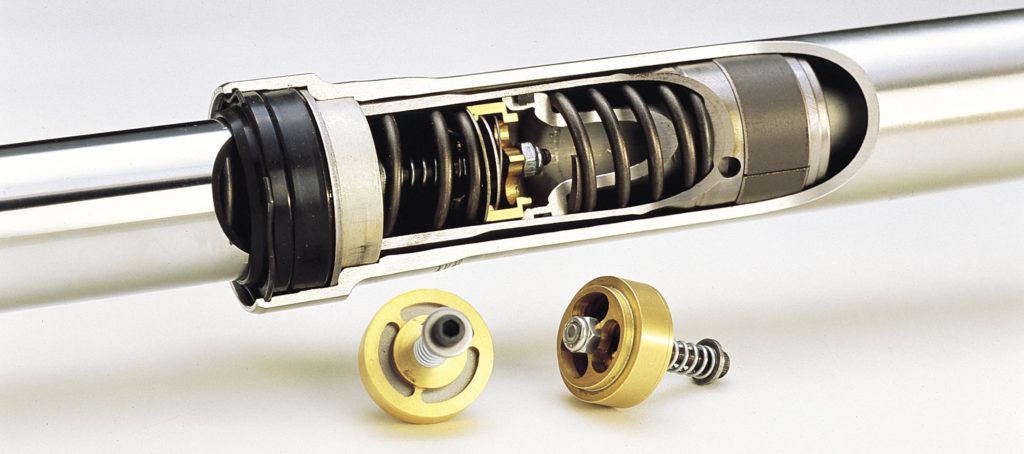
If you are fitting new springs and the Gold Valve Emulators we strongly encourage you to replace the bushings and fork seals. This will make your fork behave like new again. We also threw on a set of fork-guards from a VFR to help protect the fork tubes from rock chips and damage (51490-MN8-305).
CBR600 Forks
Another popular option is to replace the entire front end of the bike with parts from a CBR600F2 (or F3) or even a CBR929. The advantage to this option is that these bikes came with fully-adjustable cartridge forks. They will also require that you will need to replace the front wheel. The front wheel will use the much more common 120/70-17 front tire. You will also be allowed to run dual-front brake disks (as opposed to one disk that originally came on the Hawk).
This is not a perfect solution as there are a few disadvantages. Because the Hawk uses an old cable-driven speedometer as soon as you replace the front-end with anything other than F2 forks you will no longer have a speedometer or an odometer. The second disadvantage is that you will now need to replace the master cylinder and the brake calipers. The Hawk is a really light bike and we do not believe that it benefits from more powerful front brakes. In fact, we feel the heavier rotors and heavier front wheel actually erodes some of the bikes handling prowess.
The final disadvantage is purely cosmetic. You will no longer have wheels that match and big, fat front fenders that do not look correct on a super-thin, elegant Hawk GT. Depending on your personal level of OCD, this may or may not be a big deal.
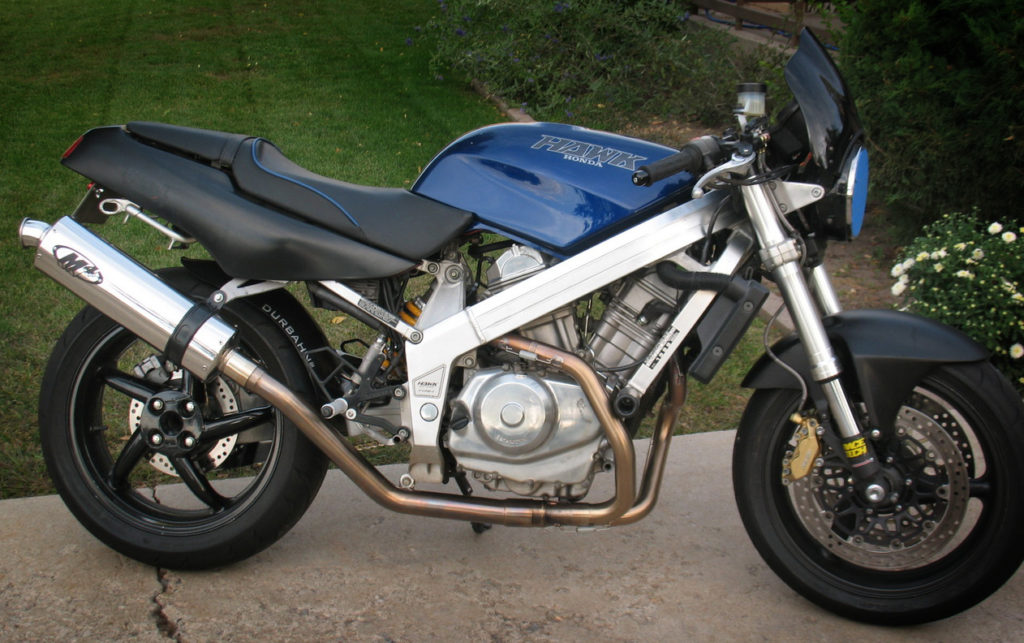
If you opt for a CBR929 front end you will be swapping to inverted front forks. Inverted front forks look stunning to be sure, but the Hawk was not designed to run these robust and inflexible forks. Inverted forks were designed for race bikes that see much higher and more powerful forces on the front end. As bikes became faster, right-side-up forks would flex so much that in some extreme cases the front tires would rub on radiators and cylinder heads.
Fitting these extremely strong and super-stiff forks on the Hawk translates to further erosion of handling. The uber-stiff inverted forks are unable to flex like the traditional RSU forks the bike came with and transfer those forces into the frame. What’s more, inverted forks are significantly heavier, particularly the part of the fork that has to move when the bike goes over bumps. This drastically changes the suspension behavior from how the bike was designed.
However, if you can find a set, 2007-2012 CBR600RR forks are a straight swap and considerably lighter than the 929 legs. Because the 600RR forks were not designed for a liter bike, they offer a lot more compliance and with all the modern awesomeness, they are a very popular upgrade. Plus, by the time to swap to the lighter front wheel and if you opt for lightened front rotors you can drop 15 pounds off the front of the bike.
Geometry
If you have followed our advice and you are after the optimum in handling then you’ll want to make a few geometry changes. Sounds scary but its not. By modern standards the Hawks geometry is very conservative with very relaxed rake and trail numbers. To make the bike handle a little quicker without sacrificing stability, we recommend lowering the front of the bike 10mm. Slide the forks up in the triple clamps until an additional 10mm is sticking up above the clipons. You will also want to raise the rear of the bike another 10mm. You won’t be able to raise the rear of the bike unless you replace the rear shock with one that has “ride-height adjustment”.
These changes make massive improvements to bike behavior but will require a few little tweaks. The first will be the sidestand will suddenly feel far too short. The bike will lean excessively and be prone to accidental tip-overs and you’ll need a block of wood or a flat rock every time you park. You will also notice that the chain will actually rub on the bottom of the frame because of the new swingarm angle.
The sidestand solution we found ended up being ridiculously simple. We took an unassuming block of aluminum, drilled two holes and found a couple of longer bolts and placed the block of aluminum in between the bottom of the frame and the top of the sidestand. Problem solved. If one was willing to take a little more time, they could make the block look a lot nicer. In our case, we used what he had on hand just to see if it worked, and when it did, we never bothered with it again.
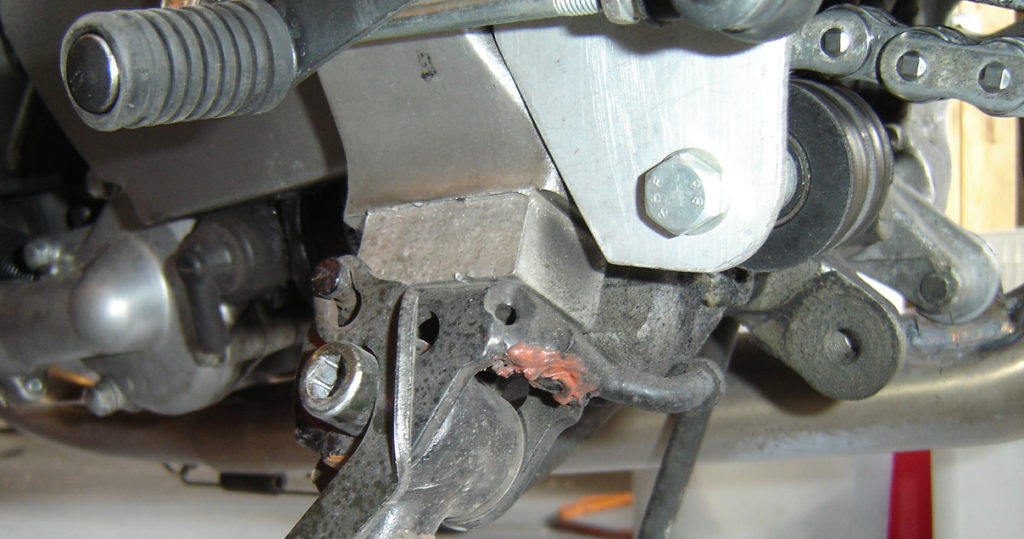
The chain drag is a little more involved. You will need a chain roller. Spend some time on the HawkGTforum.com forum and you will likely find someone who is making them and selling them but they are extremely simple to build. A flat piece of steel that mounts behind the rear-set, a shaft and a chain roller (which is a very common dirt-bike part) and you will be good to go.
Jetting
There is a lot of room for improvement in how the bike runs by making adjustments to how the bike sips fuel. When it comes to jetting, it is important to keep in mind that all engines are air pumps. The more air we can pump through the more power we can make (up until a point). Jet kits come in stages, stage 1 to stage 3. A stage 1 kit just replaces the main jets and needles, a stage 2 replaces the jets, needles, emulsifier and adds a free-flow air filter. A stage 3 kit replaces all that but, in the case of the Hawk, eliminates the air-box all together and uses pod air-filters instead.
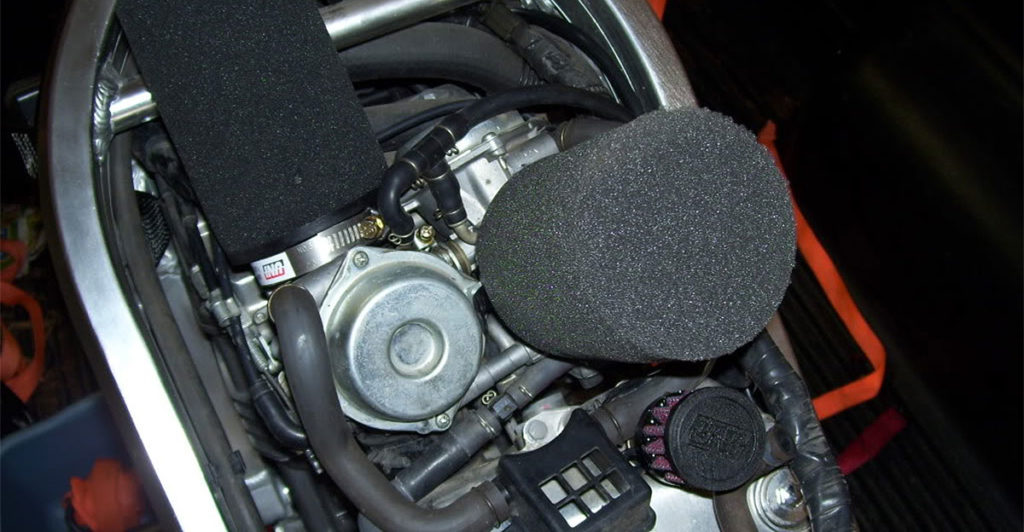
By modern standards the Hawk GT’s OEM air box is laughably small, dramatically limiting how much air can get into the Hawk motor. We tried removing the snokels, drilling holes in the top of the airbox and removing the top of the airbox all together, but we got the most out of the Hawk and the best overall results with the stage-3 kit that replaced the entire air-box in favor of the foam pod filters that bolt directly to the carburetors.
We also found that the Factory Jet Kit was head-and-shoulders better than the Dynojet Kit. Dynojets use their own numbering system that doesn’t seem to correlate to anybody else’s jets, plus their needle isn’t quite as good as the Factory needle. We strongly encourage users to opt for the Factory Jet Kit option.
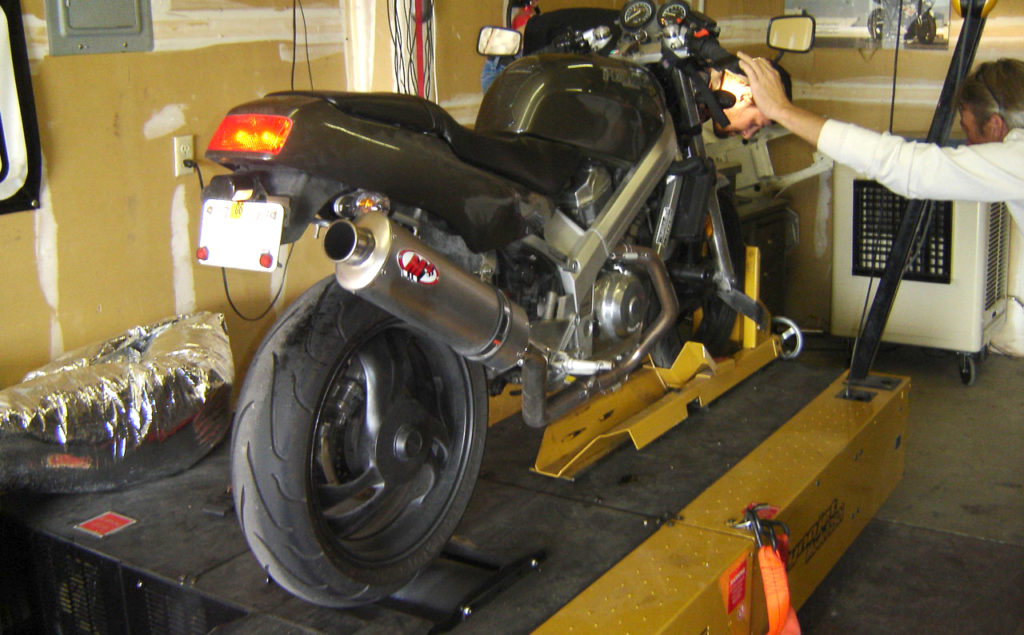
Of course, now that we’ve let more air into the motor, you will benefit from letting more air out. This is when and why you would want to install an exhaust system. We opted for the M4 system not only because of the good looks, but also because the system is modular. If one part gets damaged, you can just replace that pipe instead of having to replace the entire system. Plus, all the dyno testing done by HordPower (The go-to Hawk Expert) showed the greatest gains from the M4. In the end our Hawk GT, with only jetting and an exhaust system was making about as much horsepower as Honda originally claimed; mid 50s.
Aesthetics
Finally, the most fun stuff to change are the aesthetics. The bike is really a lot of fun to mod and why you will never see two Hawks that look the same. While we don’t expect you will make the same choices we made, we still thought we’d share what we did to ours.
Starting at the front and working our way back…
CB-1 400F Front Fender
The Hawk GT OEM front fender is silly looking. It’s big and fat looking. However, the Hawks sister bike, the CB-1 400F front fender (61100-KAF-000ZA) is great looking and fits right on with a couple of washers that need to be used as spacers. They don’t make them anymore, but they pop up on ebay and forums from time to time.
Mirrors and Winkers
The original mirrors were also awful looking. Giant rectangular blocks – blech. Throw them out and replace them with a set of bar-end mirrors. Bar end mirrors usually fit on the ends of the clipons, either where the bar-ends attach or to the bar-ends themselves. They visually lower the front of the bike and make it look tougher straight-away. There are many options out there but we feel like the vintagy round ones look better.
The original turn-signals were the big, fugly, OEM Honda ones that have been on every Honda since 1976. It’s a very common practice to replace them with smaller units from other bikes. Smaller winkers go a long way to improving the look of the bike, although to mount the front winkers requires a little creativity to affix them behind the dog-ear headlight brackets.
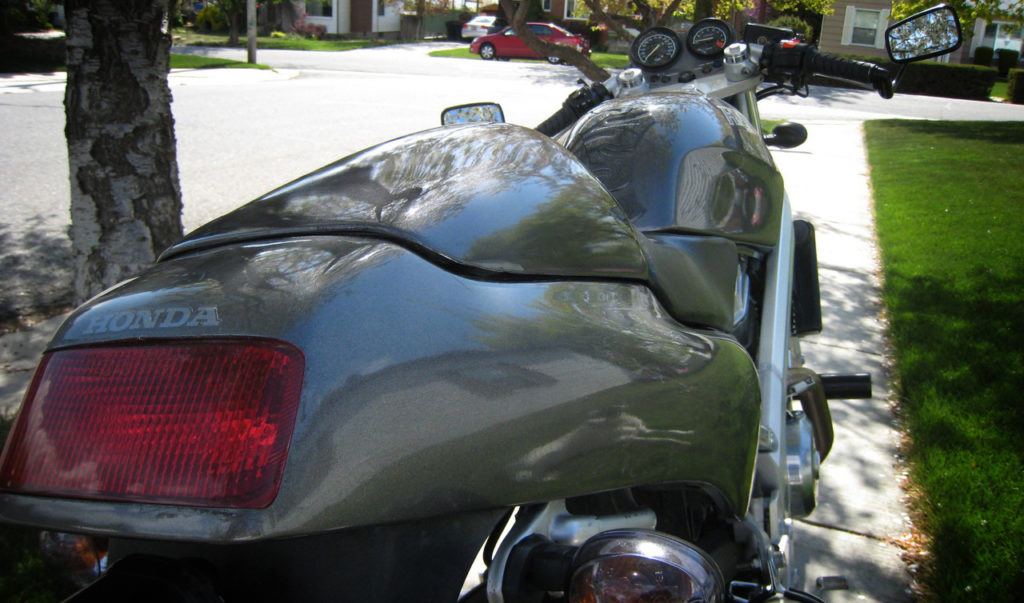
Clipons
We hated the original clipons as well. They were black and really tall. The height makes them nice for comfort, but aesthetically they look silly and because you are sitting so upright it makes sporty riding a little bit awkward. Lower clipons will visually lower the front of the bike a little more and make sporty riding a bit more fun.
Pretty much any 41mm clipon can be made to fit but the Honda ones fit better. VTR1000 SuperHawk clipons are the lowest and require that you cut the aluminum anti-rotation pegs off the bottom of the bars. We felt like these were too low, even for racetrack use and quickly discarded them.
We found the 98-2001 VFR800 clipons (53100-MBG-D00 and 53150-MBG-D00) to be spot-on perfect! You still need to grind off the pegs on the bottom of the clipons, but the finish of the clipons match the finish of the bike nicely and the height is close enough to stock to not require any changes to cables or brake lines.
The image to the right shows the shorter VTR1000 SuperHawk clipon on the left and the taller VFR800 clipon on the right.
Footpegs
Rearsets are available for the bike, but we never felt like they were necessary. The footpegs, on the other hand, are another issue. The massive, rubber coated pegs were big and clunky. That’s a simple fix. Most every motorcycle shop will have an assortment of footpegs that will bolt right into the existing rear-set/footpeg brackets.
And since we are on the subject of footpegs, lets talk about the buddy pegs. We didn’t like them as the bike is not really good at carrying two people. However the passenger pegs serve double duty as preventing the rear cowl from cracking from vibrations. Dubbed “cowl savers” we used some simple steel, bent and shaped to take the place of the passenger pegs. It only took us about 30 minutes to build ours, spray them with some paint and bolt them up and we were able to abandon the passenger footpegs for a tidy look.
Rear Fender
There are a lot of rear fender eliminator options out there, but we found the simplest and most elegant solution involved just disassembling the rear cowl and bolting the license plate and subsequent brackets directly to the smaller sub-fender. Just one more reason why the Hawk is such a fun bike to tinker with.
Solo Seat Cowl

One of our favorite bike improvements was the addition of a solo-seat cowl. They are hand made by a fellow in Germany named Fabian Tappendorff. He also makes all sorts of replacement bodywork, including entire seat cowls and CB-1 400F front fenders. They are routinely imported to America via the Hawk GT Forum.
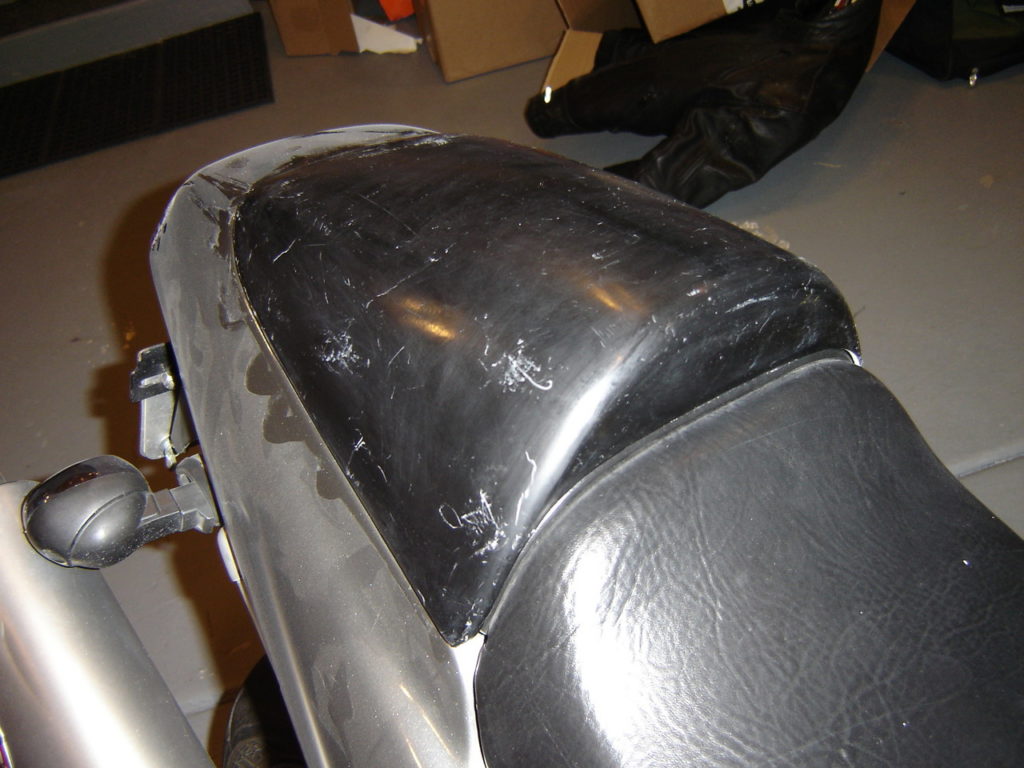
Summary
The Hawk is a wonderfully rewarding motorcycle to ride as well as own. Everyone who has ever had to privilege to keep one in their garage will tell you about how they were always tinkering to make the bike better. And because Honda uses so many similar parts between bikes, we were always pilfering new bits and retrofitting newer Honda parts to the Hawk. It’s also hard to quantify how close-knit the Hawk community is. Even after an absence of several years, when I returned to the Forum to ensure this article was accurate, I was warmly greeted by fellow “Hawkers” that I had not spoken with in years; another in a long list of reasons as to why owning a Hawk GT647 NT650 is such a positive experience and one of CanyonChasers all-time favorite motorcycles.
Resources
- Race Tech Suspension Knowledge and Parts
- HordPower Hawk GT Performance Parts and Expertise
- Honda OEM Parts Fische With Honda part numbers.
- Hawk GT Internet Community/Forum Massive amounts of expertise


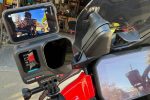

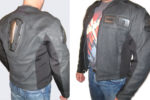
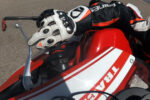
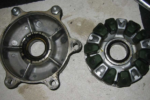
Thank you for this Hawk spotlight! Very informative… I recently got one – it’s my first bike,
I have tons of questions, and it’s cool to see how many resources there are out there. 👍
Great write up! I’ll be saving this for future reference. Have owned two hawks and an SV650. But still miss my hawk!